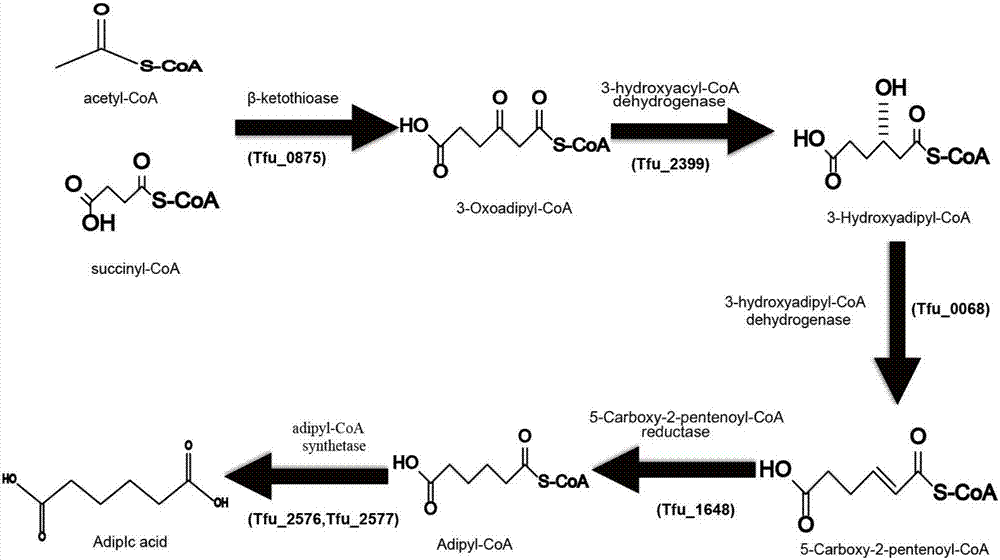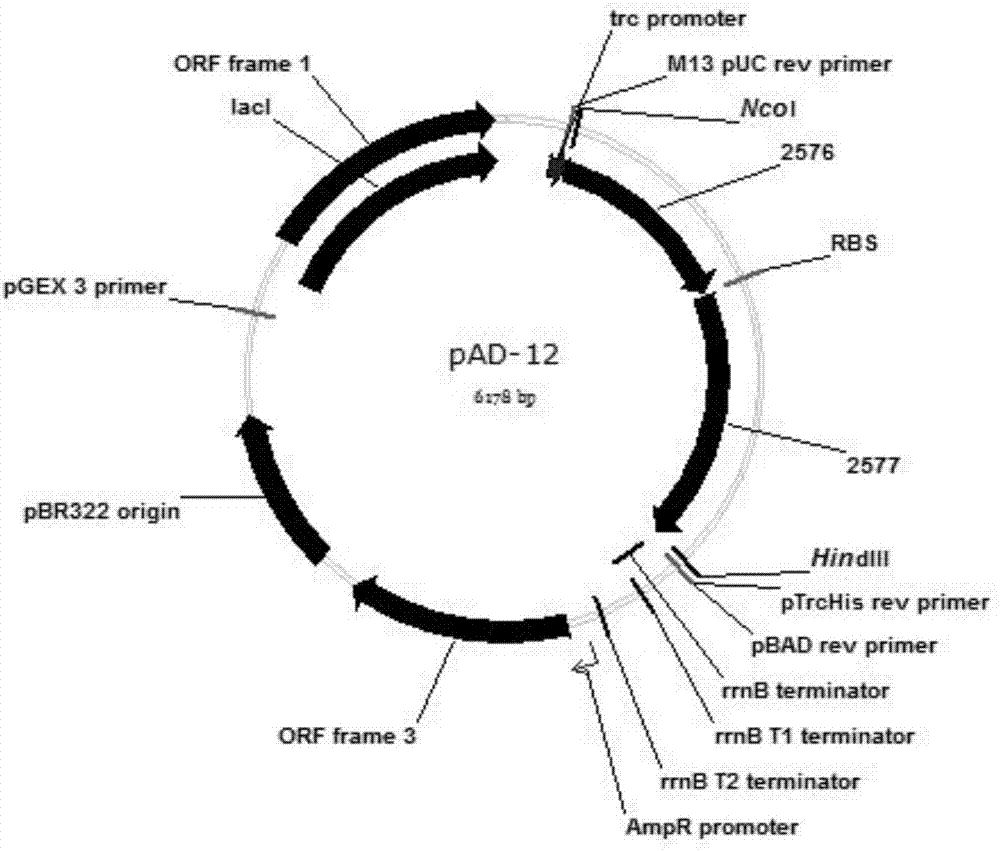Colibacillus recombinant bacterium for producing adipic acid and application of colibacillus recombinant bacterium
A technology for recombining Escherichia coli and hydroxyadipoyl dehydrogenase, which is applied in the field of bioengineering, can solve problems such as restricting the application of the method for total biosynthesis of adipic acid, and achieve the effects of saving costs, reducing usage and reducing pollution.
- Summary
- Abstract
- Description
- Claims
- Application Information
AI Technical Summary
Problems solved by technology
Method used
Image
Examples
Embodiment 1
[0036] Example 1: Construction of recombinant plasmid pAD-12 and acquisition of recombinant Escherichia coli
[0037]The sequences of Tfu_0875, Tfu_2399, Tfu_0068, Tfu_1648, Tfu_2576, Tfu_2577 have been published in NCBI before the filing date.
[0038] Nco I and Hind III double-digested plasmid pTrc99a, cut the gel to recover the plasmid fragment, used primers to PCR out Tfu_2576 and Tfu_2577, cut the gel to recover the target gene fragment, and then connected these three fragments to the plasmid pTrc99a with Gibson JABSBAN, transformed into JM109, The positive transformant was picked by colony PCR, and the plasmid was digested for verification. The verified plasmid was named pAD-12. The target gene fragments of plasmid pAD-12 and PUTRlpp were digested with NcoⅠ and EcoRⅤ enzymes, the target gene fragments were recovered by cutting the gel, and then the two target gene fragments were purified by T 4 DNA ligase ligation, transformation of JM109, positive transformants were pi...
Embodiment 2
[0041] Example 2: Recombinant Escherichia coli preliminary shake flask fermentation and result analysis
[0042] Fermentation medium: SOB medium, the composition is 2% tryptone + 0.5% yeast powder + 0.05% NaCl + 2.5mMKCl + 10mM MgCl 2 +8g / L glucose+50μg / ml kanamycin sulfate+50μg / ml ampicillin.
[0043] Seed solution preparation: Streak the bacterial species preserved in glycerol on the plate, pick a single colony and inoculate it in a 250ml Erlenmeyer flask filled with 50ml of LB liquid medium, shake the flask at 37°C and 250r / min overnight.
[0044] Fermentation conditions: 2% inoculum size, inoculated in shake flask fermentation medium SOB to make initial OD 600 0.1. Cultivate to OD at 37℃, 200r / min 600 When it is about 0.6-0.8, change to 30°C and 200rpm / min for cultivation.
[0045] Result analysis: take a sample every 4 hours during the fermentation process, centrifuge at 10,000r / min for 2 minutes to separate the fermentation broth from the bacteria, and process the fer...
PUM
 Login to View More
Login to View More Abstract
Description
Claims
Application Information
 Login to View More
Login to View More - R&D
- Intellectual Property
- Life Sciences
- Materials
- Tech Scout
- Unparalleled Data Quality
- Higher Quality Content
- 60% Fewer Hallucinations
Browse by: Latest US Patents, China's latest patents, Technical Efficacy Thesaurus, Application Domain, Technology Topic, Popular Technical Reports.
© 2025 PatSnap. All rights reserved.Legal|Privacy policy|Modern Slavery Act Transparency Statement|Sitemap|About US| Contact US: help@patsnap.com



